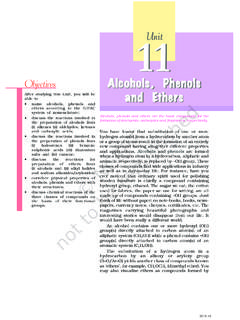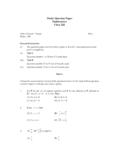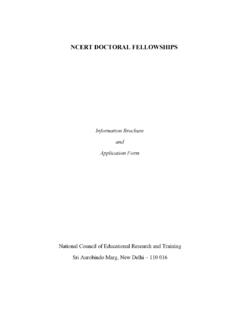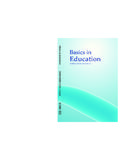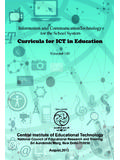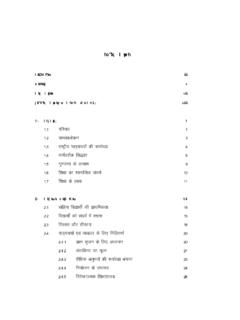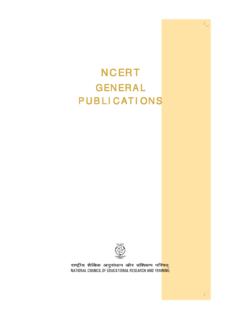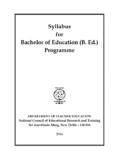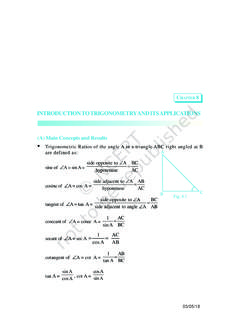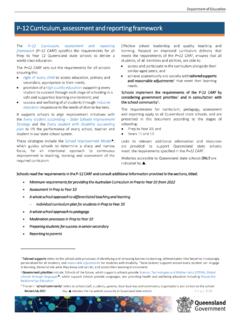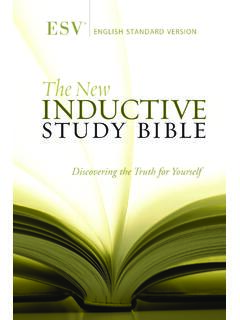Transcription of Social Science Social and Political Life–II
1 Textbook for Class VIIS ocial ScienceSocial and Political Life II2021-22 First EditionFebruary 2007 Phalguna 1928 ReprintedFebruary 2008 Magha 1929 March 2009 Phalguna 1930 January 2010 Magha 1931 December 2010 Agrahayana 1932 January 2012 Magha 1933 November 2012 Kartika 1934 November 2013 Kartika 1935 December 2014 Pausa 1936 January 2016 Pausa 1937 January 2017 Magha 1938 December 2017 Pausa 1939 January 2019 Magha 1940 January 2020 Pausa 1941 March 2021 Phalguna 1942PD 113T RSP National Council of EducationalResearch and Training, 2007` on 80 GSM paper with NCERT watermarkPublished at the Publication Division bythe Secretary, National Council ofEducational Research and Training,Sri Aurobindo Marg, New Delhi 110 016and printed at Komt Solutions Pvt. Ltd.,B-18, Sector-65, Unit-2, B-1, Sector-65,Noida - 201 301 ( )ALL RIGHTS RESERVEDqNo part of this publication may be reproduced, stored in a retrieval system ortransmitted, in any form or by any means, electronic, mechanical, photocopying,recording or otherwise without the prior permission of the book is sold subject to the condition that it shall not, by way of trade, be lent,re-sold, hired out or otherwise disposed of without the publisher s consent, in anyform of binding or cover other than that in which it is correct price of this publication is the price printed on this page, Any revisedprice indicated by a rubber stamp or by a sticker or by any other means is incorrectand should be TeamHead, Publication:Anup Kumar RajputDivisionChief Editor:Shveta UppalChief Production:Arun ChitkaraOfficerChief Business:Vipin DewanManager (In charge)Assistant Editor:Shashi ChadhaProduction Officer:Abdul NaimCover, LayoutOrijit Sen with Splash!
2 CommunicationsIllustrationsOrijit SenOFFICES OF THE PUBLICATIONDIVISION, NCERTNCERT CampusSri Aurobindo MargNew Delhi 110 016 Phone : 011-26562708108, 100 Feet RoadHosdakere Halli ExtensionBanashankari III StageBangaluru 560 085 Phone : 080-26725740 Navjivan Trust 380 014 Phone : 079-27541446 CWC CampusOpp. Dhankal Bus StopPanihatiKolkata 700 114 Phone : 033-25530454 CWC ComplexMaligaonGuwahati 781 021 Phone : 0361-26748690764 Social AND Political LIFE IITextbook for Class VIIISBN 81-7450-672-12021-22 ForewordThe National Curriculum Framework (NCF), 2005, recommends that children slife at school must be linked to their life outside the school. This principle marksa departure from the legacy of bookish learning which continues to shape oursystem and causes a gap between the school, home and community. The syllabiand textbooks developed on the basis of NCF signify an attempt to implement thisbasic idea. They also attempt to discourage rote learning and the maintenance ofsharp boundaries between different subject areas.
3 We hope these measures willtake us significantly further in the direction of a child-centred system of educationoutlined in the National Policy on Education (1986).The success of this effort depends on the steps that school principals andteachers will take to encourage children to reflect on their own learning and topursue imaginative activities and questions. We must recognise that given space,time and freedom, children generate new knowledge by engaging with theinformation passed on to them by adults. Treating the prescribed textbook as thesole basis of examination is one of the key reasons why other resources and sitesof learning are ignored. Inculcating creativity and initiative is possible if we perceiveand treat children as participants in learning, not as receivers of a fixed body aims imply considerable change in school routines and mode offunctioning. Flexibility in the daily timetable is as necessary as rigour inimplementing the annual calendar so that the required number of teaching daysis actually devoted to teaching.
4 The methods used for teaching and evaluationwill also determine how effective this textbook proves for making children s life atschool a happy experience, rather than a source of stress or boredom. Syllabusdesigners have tried to address the problem of curricular burden by restructuringand reorienting knowledge at different stages with greater consideration for childpsychology and the time available for teaching. The textbook attempts to enhancethis endeavour by giving higher priority and space to opportunities forcontemplation and wondering, discussion in small groups, and activities requiringhands-on National Council of Educational Research and Training (NCERT)appreciates the hard work done by the textbook development committee responsiblefor this book. We wish to thank the Chairperson of the advisory group in SocialSciences, Professor Hari Vasudevan, the Chief Advisor, Sarada Balagopalan andthe Advisor, Arvind Sardana for guiding the work of this committee.
5 Severalteachers contributed to the development of this textbook; we are grateful to theirprincipals for making this possible. We are indebted to the institutions andorganisations which have generously permitted us to draw upon their resources,2021-22ivmaterial and personnel. We are especially grateful to the members of theNational Monitoring Committee, appointed by the Department of Secondaryand Higher Education, Ministry of Human Resources Development underthe Chairpersonship of Professor Mrinal Miri and Professor Deshpande,for their valuable time and contribution. As an organisation committed tosystemic reform and continuous improvement in the quality of its products,NCERT welcomes comments and suggestions which will enable us toundertake further revision and DelhiNational Council of Educational20 November 2006 Research and Training2021-22vTextbook Development CommitteeCHAIRPERSON, ADVISORY COMMITTEE FOR Social Science TEXTBOOKS AT THE UPPERPRIMARY LEVELHari Vasudevan, Professor, Department of History, University of Calcutta, KolkataCHIEF ADVISORS arada Balagopalan, Centre for the Study of Developing Societies (CSDS), RajpurRoad, DelhiADVISORA rvind Sardana, Eklavya Institute for Educational Research and InnovativeAction, Madhya PradeshMEMBERSA njali Monteiro, Professor, Tata Institute of Social Sciences (TISS)
6 , MumbaiAnjali Noronha, Eklavya Institute for Educational Research and InnovativeAction, Madhya PradeshAnuradha Sen, H-701, Som Vihar, Puram, New DelhiDipta Bhog, Nirantar Centre for Gender and Education, New DelhiKrishna Menon, Reader, Lady Shri Ram College, New DelhiLatika Gupta, Consultant, Department of Elementary Education (DEE), Srinivasan, Lecturer, Department of Education in Social Sciences andHumanities (DESSH), NCERTM alini Ghose, Nirantar Centre for Gender and Education, New DelhiMary E. John, Director, Centre for Women s Development Studies (CWDS),New Sarojini, Sama Resource Group for Women and Health, New DelhiRangan Chakravarty, A 4/7, Golf Green Urban Complex, Phase 1, KolkataSanjay Dubey, Reader, DESSH, NCERTS hobha Bajpai, Government Middle School, Uda, District Harda, Madhya PradeshSukanya Bose, Eklavya Research Fellow, 66 F Sector 8, Jasola Vihar, New DelhiMEMBER-COORDINATORM alla Prasad, Lecturer, DESSH, NCERT2021-22 AcknowledgementsThis book has benefited from its association withseveral individuals and institutions.
7 Theseinclude Poonam Batra, Piu Dutt, S. Mohinder andAditya Nigam who read most of the chapters inthe book and gave us helpful feedback. In addition,Rajeev Bhargav, Kaushik Ghosh, Anu Gupta,Sunil and Ramani discussed ideas andcommented on particular chapters. wasgracious in agreeing to read all of the chaptersand her extensive comments have enrichedthis book substantially. Anjali Monteiro andS. Shankar shared with us their ideas on themedia at different stages and helped us expandupon that particular chapter in meaningful Biswas helped us in finding anappropriate poem for our last chapter and VinayMahajan was gracious in allowing us to use Biswas and Dipta Bhog translated thispoem into English while Ravikant assisted infinalising this translation. Smriti Vohra alsoagreed to do some last minute editing withoutrealising how much she had taken on, and wethank her for her time and careful to his role in the Class VI book, AlexGeorge has been of significant help with hisinsights, ideas and information.
8 Urvashi Butaliacontinues to be generous with her time andwillingness to serve as editor, thereby ensuringthat this text has gained from her thank Zubaan for allowing us to use posterimages from their book Poster Women: A VisualHistory of the Women s Movement in India. Wewould also like to thank Trimurti Films PrivateLtd. for allowing the use of the Deewar For Law and Development graciouslyallowed us to use their image on page 63. ThePrincipal, teachers and students of Class VI B atthe Kendriya Vidyalaya II at Hindon, Ghaziabadreadily agreed to work on the wallpaper and thecollage that we have used in the book and werekind in allowing us to photograph this as would also like to thank Geetanjali, Sr. PRO,Northern Railway, for the public advertisementand the UNDP India for the material about theSustainable Development Goals (SDGs).M. Quraishy at SARAI also extended his helpwhen required and we thank him for photographs that this book uses wereprocured from various sources and we are deeplygrateful to all these institutions and Centre for Science and Environment (CSE)was more than generous with their photographsand Amit Shankar and Anil with their Magazine also shared with us, at veryshort notice, photos from their archives.
9 SheebaChacchi provided us with her photos for thephoto-essay on the women s movement. SalilChaturvedi and Shahid Datawala helped provideappropriate images from their Basadia provided us with photos of theTawa Matsya Sangh (TMS) and the MahilaBalvikas Department at Dewas gave us theimage of the Anganwadi. Harsh Man Rai and BajiRao Pawar also contributed their photos as wellas helped click new photos that we needed. helped with coordinating the photosfrom Erode. We thank Navdanya for some of theimages used for the collage on health. SaradaBalagopalan also helped click some of the imagesused in this passion and patience that Orijit Sen andSalil Chaturvedi have invested as the mainillustrator and designer of this book can be seenin every page, and we thank them for played a crucial role in the translationof this book into Hindi and we would, inparticular, like to thank Rashmi Paliwal for hersupervision of the process and Tultul Biswas forhelping facilitate institutions have played a key role innot only being understanding about our pre-occupation with this book but in actively assistingits development in numerous ways.
10 The Centrefor the Study of Developing Societies (CSDS),Eklavya, Nirantar, Centre for Women sDevelopment Studies (CWDS) and Sama havebeen generous in their note for teachersThere is a substantial difference between Civicsand Social and Political Life, not only in terms ofthe topics covered but also in the pedagogicapproaches required in each subject these in mind, this Introductionattempts to clarify certain aspects of Social andPolitical is Social and Political Life? Social and Political Life (SPL) is a new subjectarea in middle school Social Science that hasreplaced the earlier subject of Civics. TheNational Curriculum Framework (NCF) 2005strongly argues that Civics should bediscontinued and its focus on governmentinstitutions and functioning should be temperedin the new subject that replaces it. SPL, as itsname suggests, focuses on topics related tosocial, Political and economic life incontemporary pedagogicalapproach does SPL use?
